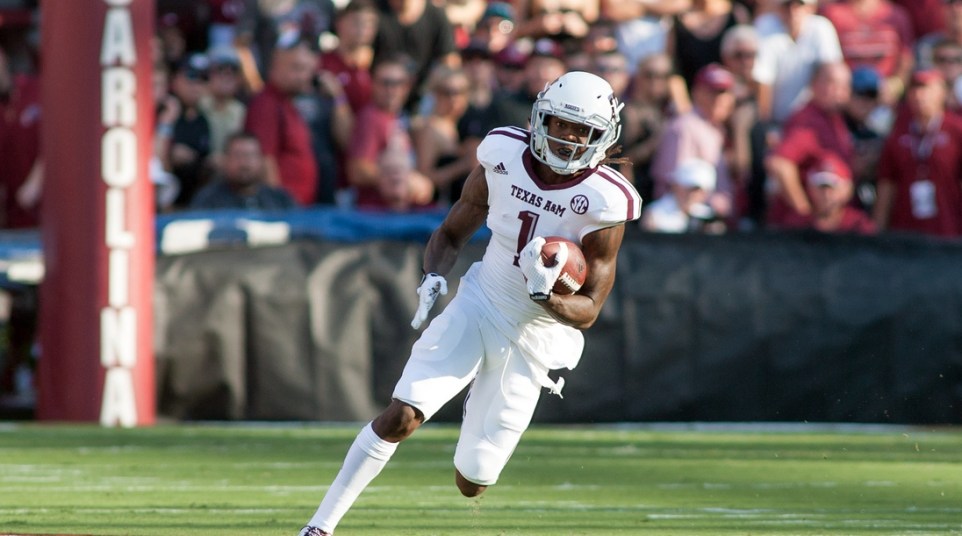Brandon Williams at cornerback will yield positives for Aggies
Late last week, Kevin Sumlin made an appearance at a Texas A&M fundraiser. Before the event, he shared a bit of information on his defense: Brandon Williams, who spent some time at cornerback this spring, will be making the move to defense full-time after playing running back his entire career.
A former five-star running back recruit and Texas native who transferred from Oklahoma in 2012, Williams had a chance to be a contributor in the backfield this fall. Sumlin was pleased that Williams had packed on a few extra pounds, and with Dave Christensen now in town, the running game figures to be more effective than in years past.
The reasoning behind the move makes a ton of sense. The Aggies have Tra Carson and James White in the backfield already, plus freshman Kendall Bussey. New defensive coordinator John Chavis needs competent bodies on his side of the ball, especially in the secondary, where three seniors graduated last year. Just as importantly, Chavis needs guys who fit a certain physical mold to be able to play the way he wants to play.
“(Williams) has got average size at 6-foot and 195 or 200 lbs. for a running back, maybe a little below average,” Sumlin said last week, according to the Houston Chronicle. “But you’ve got a cornerback (at that size) he goes to the top of the charts, because he’s one of the fastest guys on the team, if he can make the transition.”
Those physical attributes exactly what Chavis wants in his cornerbacks. He likes long and fast corners who can press up on a receiver and stick with them in man coverage. De’Vante Harris, the returning cornerback with the most experience on the team, has bulked up a little bit this offseason, but he’s still slight at about 175 pounds. Even as he’s added bulk and presumably strength, he’s not exactly on the same physical level as the Duke Williams and Laquon Treadwells of the SEC.
If Williams does make the transition smoothly, he’s exactly the type of athlete who can keep up with that kind of monster out wide. Victor Davis rivals Williams in terms of size amongst the Aggies cornerbacks, but isn’t in the same class as Williams as an athlete (Williams has been clocked at 4.4 seconds in the 40-yard dash). None of Harris, Nick Harvey or Tavares Gardner has the kind of size Chavis likes.
Now, it’ll be up to Williams to grasp the position over the summer. If he can get up to speed quickly — and he has one of the best coaches in the country for developing defensive backs on his side — then Texas A&M could have a weapon in the secondary capable of taking advantage of the havoc a strong defensive line should create.
Williams has the raw talent to immediately be one of the Aggies’ best defensive backs; it’s just a matter of getting him ready to play the position.

